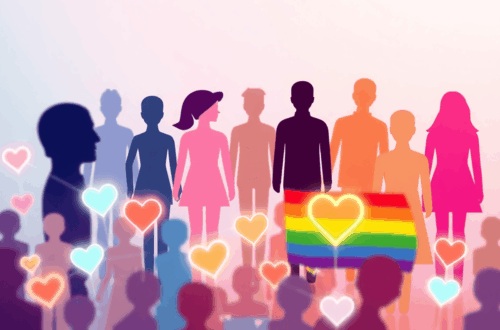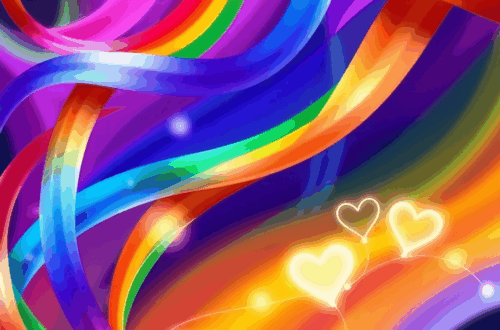Finding the best dating app for LGBTQ individuals has become less about settling for mainstream platforms and more about choosing spaces designed with queer experiences in mind. I’ve tested dozens of LGBTQ dating apps to identify the ones that genuinely prioritize safety, inclusivity, and meaningful connections. My top picks include Grindr for gay men seeking both hookups and relationships, Feeld for bisexual and sexually fluid individuals exploring non-traditional dynamics, and Lex for queer women and non-binary folks wanting text-based connections.
The queer community needs specialized dating platforms because generic apps often fail to address unique challenges like identity verification, pronoun options, and protection from discrimination. Dating apps have evolved significantly from the early days when LGBTQ+ users had to navigate predominantly heteronormative spaces. Today’s queer dating platforms offer customizable gender identities, sexuality spectrums, and community-focused features that recognize the diversity within the LGBTQ+ umbrella. These improvements reflect a growing understanding that one-size-fits-all approaches don’t work for communities with distinct needs and safety concerns.
Understanding the Unique Needs of LGBTQ+ Daters
LGBTQ dating challenges go beyond just the usual awkwardness of first dates and setting up profiles. You have specific obstacles that straight users usually don’t face, such as discrimination, fetishization, and harassment. These issues can make finding a connection feel more tiring than thrilling.
Discrimination can show up in various ways:
- Getting hostile messages just because of who you are
- Being ignored after revealing your gender identity or sexual orientation
- Coming across profiles that explicitly say they don’t want LGBTQ+ individuals
- Dealing with subtle biases disguised as “preferences”
When you’re using dating apps where not everyone respects your right to be yourself, safety becomes a major concern. You have to constantly evaluate whether potential matches are genuinely interested or have harmful intentions. This constant vigilance can take away the excitement from what should be a fun experience.
For LGBTQ+ individuals, expressing your identity while dating is especially important. You deserve platforms that let you fully communicate who you are—whether you’re non-binary, pansexual, demisexual, or any other identity that doesn’t fit into traditional categories. Being able to share your pronouns, relationship preferences, and identity labels isn’t just a nice addition; it’s crucial for finding compatible matches who understand and accept you.
You need dating spaces where your identity is celebrated, not questioned or dismissed. The right platform understands that your safety and ability to express yourself authentically aren’t optional features—they’re basic necessities.
Key Features to Look for in an LGBTQ+ Dating App
When you’re evaluating dating platforms, certain features separate truly inclusive apps from those that simply slap a rainbow flag on their marketing materials. You need to look beyond surface-level promises and examine the actual tools that protect and empower LGBTQ+ users.
Profile Verification
Profile verification stands as your first line of defense against catfishing and fake accounts. Apps that require photo verification, phone number confirmation, or social media linking create a more trustworthy environment. You’ll find that verified profiles significantly reduce the anxiety of wondering whether the person you’re talking to is genuine. This feature becomes especially critical for LGBTQ+ users who face higher rates of deception and targeted harassment.
Safety Features
Safety features LGBTQ apps implement should go beyond basic blocking options. You want platforms that offer:
- Robust reporting systems that actually respond to complaints about harassment or hate speech
- Discreet panic buttons that let you quickly exit conversations or hide your profile
- Privacy controls allowing you to choose who sees your profile and personal information
- Screenshot notifications that alert you when someone captures your photos or messages
Inclusive Matching Algorithms
Inclusive matching algorithms represent the technical backbone of a truly LGBTQ+-friendly platform. These systems need to recognize the full spectrum of gender identities beyond the binary—including non-binary, genderfluid, and transgender identities. You deserve algorithms that don’t force you into predetermined boxes or make assumptions about your preferences based on outdated gender norms.
Top Dating Apps Specifically Designed for LGBTQ+ Users
When searching for the best dating app for lgbtq connections, you’ll find several platforms built specifically with queer communities in mind. These apps understand the nuances of LGBTQ+ dating from the ground up.
1. Grindr: The Best Gay Dating App
Grindr stands out as the best gay dating app for a reason—it pioneered location-based dating for gay, bi, trans, and queer people back in 2009. With over 13 million users worldwide, you’ll find an active community whether you’re looking for dates, friendships, or hookups. The app’s grid-style interface shows nearby users, making it incredibly efficient for connecting with other men in your area.
2. Taimi: The Comprehensive LGBTQ+ Dating App
However, if you’re looking for a more inclusive experience, Taimi is worth considering. This platform is not just another gay dating app; it’s a comprehensive LGBTQ+ dating app that caters to all queer hearts. Taimi has been designed specifically for the LGBTQ+ community and offers a range of features that make it stand out.
3. Feeld: The Bisexual Dating App
For those seeking a bisexual dating app that truly gets it, Feeld creates space for all orientations without forcing you into rigid categories. You can explore connections with singles or couples, and the app’s design celebrates sexual fluidity. I’ve found that Feeld’s community tends to be more open-minded and communicative about desires and boundaries than mainstream platforms.
4. Ace App: The Asexual Dating Platform
The asexual dating platform landscape has been historically underserved, but Ace App fills this gap beautifully. Built by asexual people for asexual people, it recognizes the spectrum of ace identities and allows you to specify whether you’re seeking romantic relationships, friendships, or community connections. You won’t face pressure to conform to allosexual dating norms here.
Additionally, if you’re specifically interested in exploring gay relationships through an app that offers more than just basic features, you might want to check out this Taimi Gay App Review. It provides an in-depth look at Taimi’s offerings including its advantages and disadvantages.
Lastly, if you want to know more about Taimi before diving in, consider reading through this Taimi Review, which covers everything from its functionality on different devices to user experiences.
Mainstream Apps with Strong LGBTQ+ Inclusivity Features
You don’t need to limit yourself to niche platforms when searching for inclusive mainstream dating apps. Several major players have made significant strides in creating welcoming spaces for queer users.
1. OkCupid: Extensive Customization Options
OkCupid stands out with its extensive customization options. You can select from over 20 gender identities and 20+ sexual orientations, allowing you to represent yourself authentically. The platform’s matching algorithm incorporates these identities into compatibility calculations, ensuring you connect with people who respect and understand your identity.
2. Tinder: Mixed Reputation Among Queer Users
Tinder presents a mixed picture when it comes to LGBTQ inclusivity. While the app boasts the largest user base—giving you access to millions of potential matches—its reputation varies among queer users. You’ll find plenty of LGBTQ+ individuals on the platform, but the experience can feel less curated than specialized apps. The sheer volume of users means more options, though you might encounter people who aren’t as educated about LGBTQ+ issues.
3. Bumble: Middle Ground for Queer Matches
Bumble offers a middle ground for queer dating. The platform requires women to message first in heterosexual matches, but same-gender matches allow either person to initiate. You’ll typically encounter fewer harassment issues compared to other mainstream apps, and the community tends to be more respectful of diverse identities.
Safety Best Practices for LGBTQ+ Online Daters
Protecting yourself while navigating online dating requires intentional privacy measures. You should limit personal information on your profile—avoid sharing your full name, workplace details, home address, or specific location markers that could identify you. Use the app’s messaging system instead of giving out your phone number immediately. This approach to online dating safety tips LGBTQ community members can use helps you maintain control over who has access to your personal data.
Before meeting anyone in person, you need to vet potential matches thoroughly. Request a video chat to confirm they match their profile photos and gauge your comfort level with them. Search their name on social media platforms to verify their identity and look for red flags. These queer daters harassment prevention strategies give you multiple touchpoints to assess someone’s authenticity.
Meeting safely means choosing public locations for first dates, telling a trusted friend your plans, and maintaining your own transportation. You can also use apps with built-in safety features like check-in timers or location sharing with trusted contacts.
How Dating App Algorithms Affect LGBTQ+ Matching Experiences
Dating app algorithms shape who you see and who sees you, making them critical to your experience as an LGBTQ+ user. The Tinder Elo algorithm historically ranked users based on desirability scores, which meant your profile visibility depended on how many people swiped right on you. This system created problems for LGBTQ+ users who already faced smaller dating pools and potential discrimination through fewer right swipes.
AI matchmaking LGBTQ apps like Hornet now use more sophisticated approaches. Hornet AI analysis examines your behavior patterns, interests, and interactions to suggest compatible matches rather than relying solely on popularity metrics. This shift matters because traditional algorithms often reinforced existing biases, pushing non-cis or non-straight profiles to the bottom of suggestion queues.
When you’re searching for the best dating app for lgbtq connections, you need platforms where algorithms recognize your identity without penalizing it. Apps with inclusive coding ensure:
- Your gender identity and pronouns receive proper recognition in matching logic
- The system doesn’t default to heteronormative pairing assumptions
- Your profile reaches users genuinely interested in your authentic self
Choosing the Right App Based on Your Dating Goals
Your dating intentions should drive your app selection. Different platforms cater to distinct relationship styles, and understanding these differences saves you time and frustration.
For casual connections and hookups
Grindr remains the go-to for gay and bisexual men seeking immediate encounters. Scruff offers similar functionality with a slightly different user demographic. HER provides casual dating options for queer women while maintaining community features.
When you’re seeking serious relationships
Platforms like Hinge and OkCupid deliver better results. These apps emphasize detailed profiles and compatibility questions that help you find meaningful connections. Lex attracts queer individuals interested in thoughtful conversations before meeting, making it ideal for relationship-minded users.
Finding friendships through queer apps
Requires specific platforms. HER excels at facilitating platonic connections within the lesbian and queer community through event features and group discussions. Taimi combines dating with social networking, allowing you to specify friendship as your primary goal. Lex’s text-based approach naturally fosters genuine connections that can develop into friendships.
You’ll notice some apps serve multiple purposes—HER works for both casual vs serious dating LGBTQ scenarios—so explore each platform’s settings to communicate your specific intentions clearly.
Conclusion
Finding the best dating app for LGBTQ individuals requires prioritizing two non-negotiables: safety and inclusivity. You deserve platforms that protect your identity, respect your pronouns, and create spaces where you can be authentically yourself without fear of discrimination or harassment.
I encourage you to download and test multiple apps rather than settling for the first one you try. What works brilliantly for your friend might not align with your dating goals or comfort level. Take advantage of free trials, explore different interfaces, and pay attention to how each platform makes you feel.
Remember these safe queer online dating tips: trust your instincts, use built-in safety features, and never compromise on your boundaries. The right app exists for you—one that celebrates your identity while connecting you with genuine matches who share your relationship goals.
This best LGBTQ dating app summary serves as your starting point. Your perfect match is out there, and the right platform will help you find them.
FAQs (Frequently Asked Questions)
Why are specialized dating apps important for the LGBTQ+ community?
Specialized dating apps for LGBTQ+ users provide safe, inclusive environments tailored to unique challenges such as discrimination and harassment. They support identity affirmation and self-expression, which are crucial for meaningful connections within the queer community.
What key features should I look for in an LGBTQ+ dating app?
Look for profile verification to reduce fake profiles, robust safety features like reporting and blocking mechanisms, and inclusive matching algorithms that respect diverse gender identities and sexual orientations to ensure fair and trustworthy interactions.
Which dating apps are considered the best for specific LGBTQ+ groups like gay, bisexual, or asexual individuals?
The best gay dating app is chosen based on user trust and community size; similarly, top bisexual and asexual platforms are selected for their inclusivity and specialized features catering to those identities. Exploring these targeted apps can enhance your dating experience.
How do mainstream dating apps support LGBTQ+ inclusivity?
Mainstream apps like OkCupid have expanded gender and sexuality options promoting inclusivity. Tinder has a large user base but mixed inclusivity reputation, while Bumble offers meaningful queer options with fewer reported issues, providing various choices depending on your preferences.
What safety best practices should LGBTQ+ individuals follow when online dating?
Limit personal information on profiles to protect privacy, use safety tools provided by apps such as reporting and blocking, and vet potential matches through social media or video chats before meeting in person to ensure safer introductions and prevent harassment.
How do dating app algorithms impact LGBTQ+ matching experiences?
Algorithms like Tinder’s Elo system affect match suggestions by ranking user interactions. Inclusive algorithms avoid bias against non-cisgender or non-heterosexual identities, ensuring fair representation within the user pool and improving matching quality for LGBTQ+ daters.




